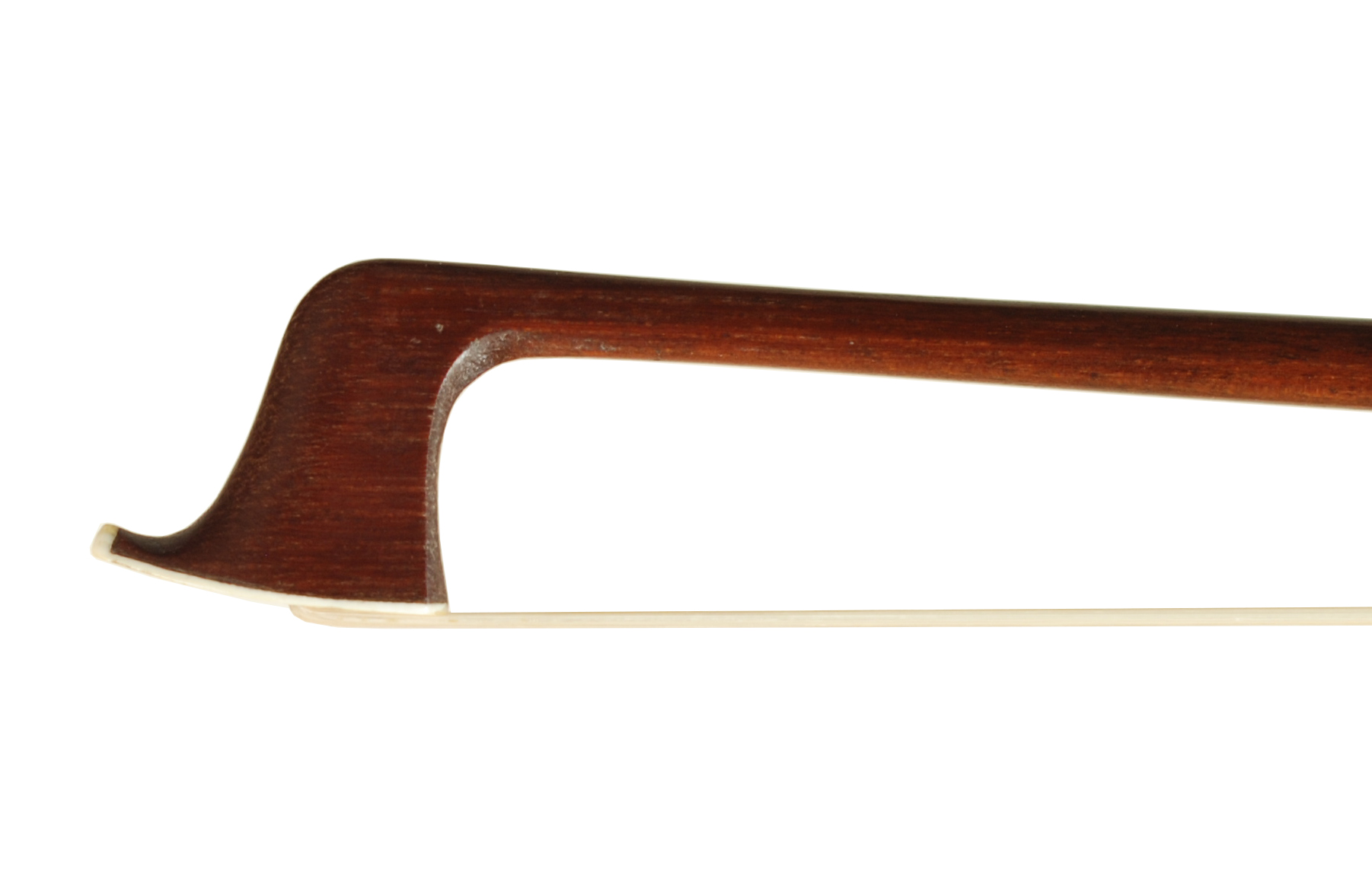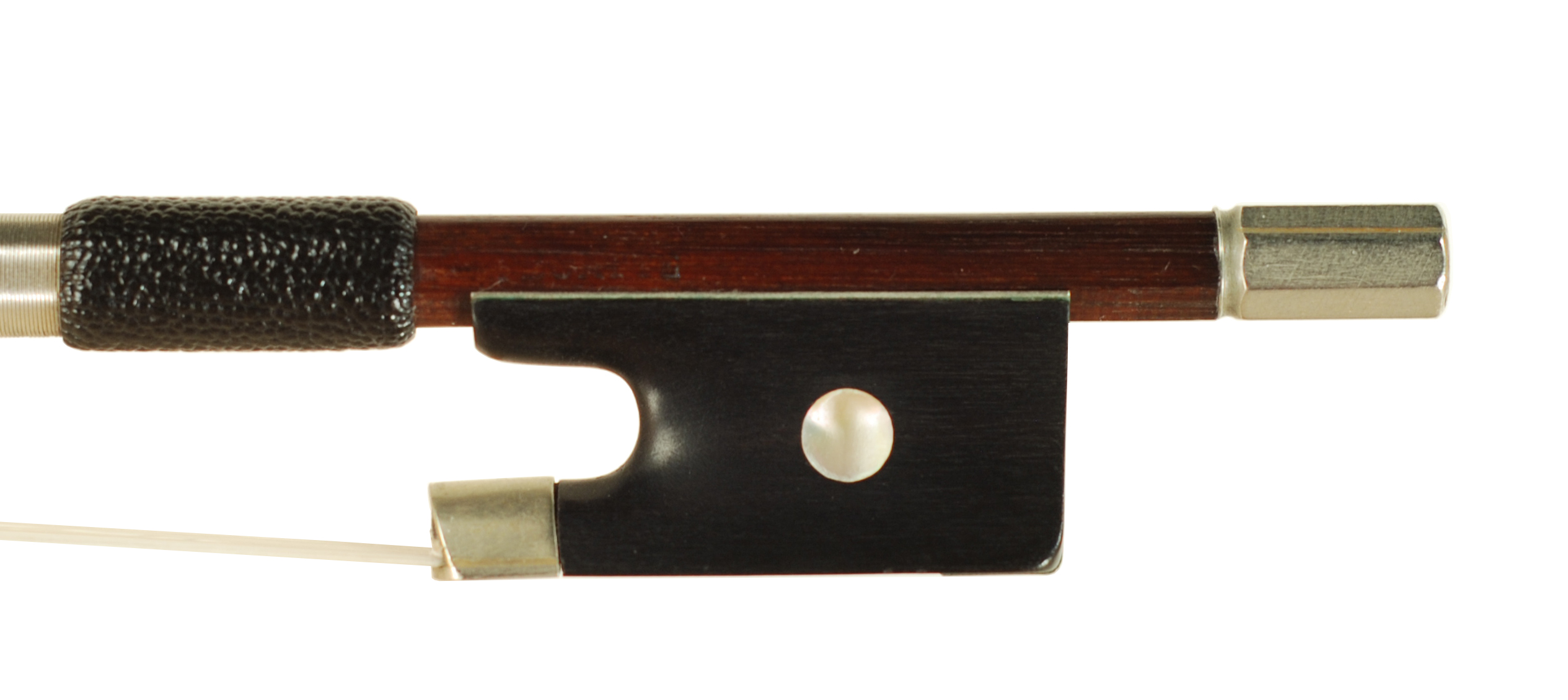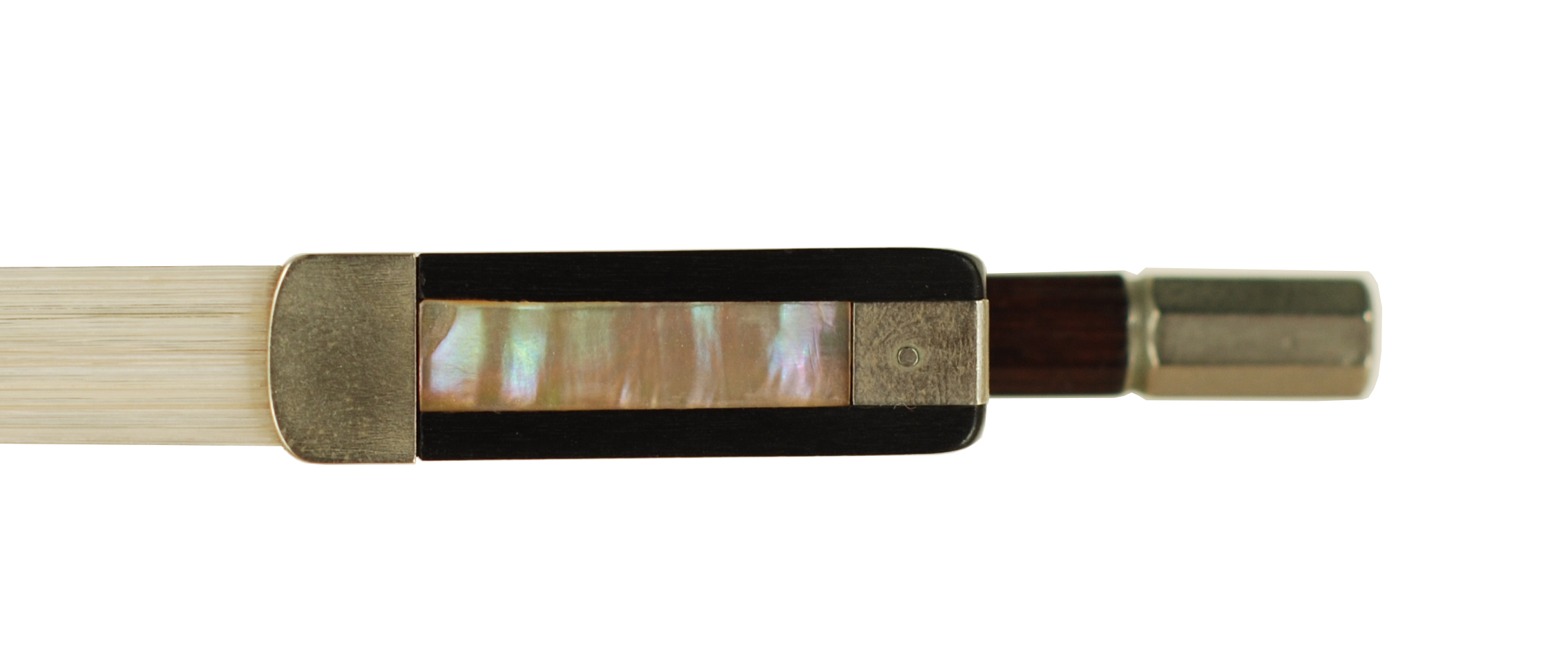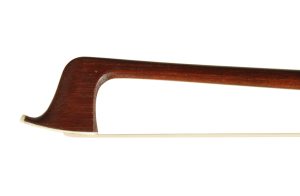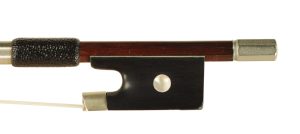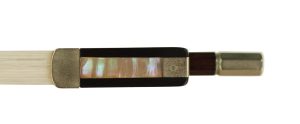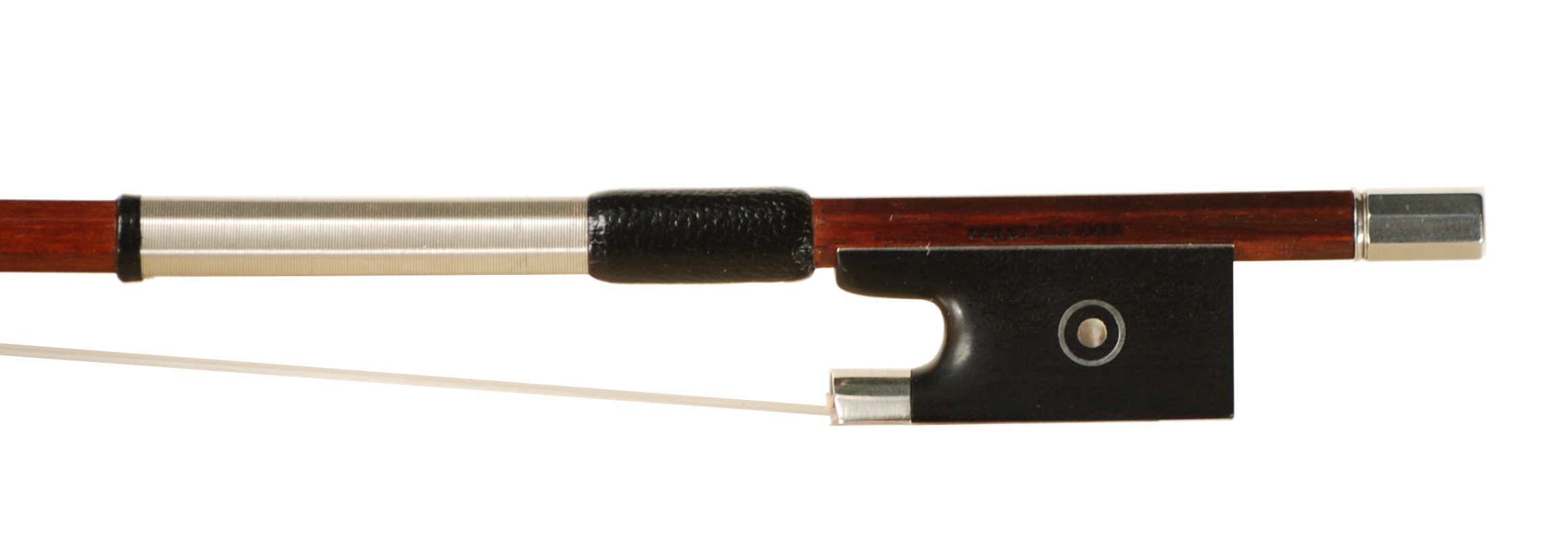Violin Bow Stamped Pecatte – Markneukirchen circa 1910-1920
$895.00

Stamped:
You may be looking for a high end pernambuco violin bow but remember it’s always about how your violin sounds and responds. This bow could be the one. The stick is firm and the bow handles very well. A bow with excellent craftsmanship, completed in nickel silver mounts. You may be looking for a sleeper, no famous maker’s name but a very good playing bow with darker older wood, at a good price– this is it. This is a German bow close to 100 years old in pernambuco wood. The wood is choice in its grain and chocolate in color. Old pernambuco, round in section that must have been laying around and/or hiding in an old workshop. The wood was harvested in the late 1800’s, dried for 15-20 years before cut to make into a bow. The handmade frog is slightly worn from years of playing and easily lays in the hand. The frog has a single eye, mother-of-pearl slide and a solid nickel end button with a beveled turn in the cap. Considering what has happened to pernambuco wood from Brazil in the last three years- complete stoppage of use by the Brazilian government- it is great to see these older bows get completed and ready for sale. All making with pernambuco wood has been halted by the Brazilian government. Makers are scrambling to discover new woods and alternatives. This bow was made at a time period that the German makers were stamping their bows with French or Italian names to be able to sell there bows. There is no country of origin on this bow helping me to place this bow just after World War I.
This is a bow made in the Markneukirchen area in the geographic region known as Saxony. Markneukirchen was the town where many young men who wanted to become bow makers and develop their skills were drawn. They hoped to get employed by a shop that might pay a worker enough to live on. Apprentices would work long hours, akin to farmers’ hours. At first, they might have to pass a bench test given by the shop owner demonstrating their work with a knife, a chisel, small block planes, and their sharpening skills. When I started as a young apprentice, I cut sandpaper to desired widths and length each worker wanted and the correct grits. I also spent many hours carving perfect square blocks, I mean perfect. I also spent one entire day every two weeks sharpening the basic tools that were owned by the shop, especially at the bow benches. The bow guys were very fussy about how sharp their stuff had to be. It had to be perfect and no excuses. The blades had to be at the correct angles, and a polished finish on their chisels. The bow chisels were always getting worn because of their use in the ebony frog and much mortise work. Ebony is used in a bow’s frog, and on instruments on fingerboards, nuts, saddles and pegs. Ebony is one of the hardest woods to carve that the Lord makes (John 1:3 NIV). He made it all, we just get to work with it. The ebony is beautiful, but its density is like a rock. In the 19th and 20th century young apprentices developed their skills for 3-5 years and some never left, getting hired for better wages and better hours. There were many though that didn’t continue; if they did not show potential they were let go after a year. Apprentices signed contracts which stated a work week was six days per week from sunup to sundown. I have seen these signed old apprentice contracts sold at auctions in Europe. These shop owners had a practice not to have young makers put their personal name on a bow, so in this case fine French makers name fit the bill. There is nothing to indicate country of origin. Pecatte is a French name, but the bow was made in a German workshop. This bow is above the quality of a typical student level violin bow. It is a nickel silver mounted stick with a semi-firm fight in the bow. I gave the stick a good cleaning and a new nickel winding and leathers. The tip of the bow is in fine condition, no issues. The frog has pin work in the heel and in the lining. This is a sleeper violin bow, great bones, German workmanship but no stamped origin, firm chocolate colored pernambuco, and a bow that will make a violin respond well.
Weight fully haired 57.2 grams

